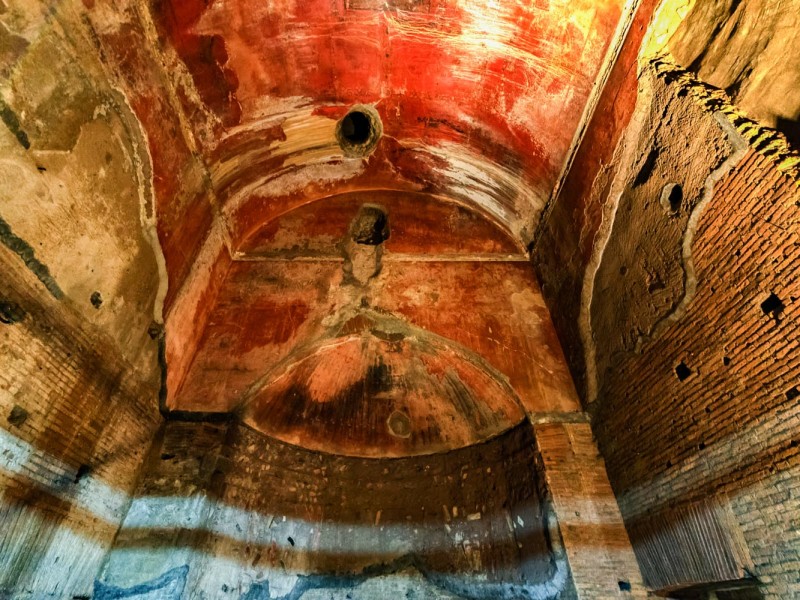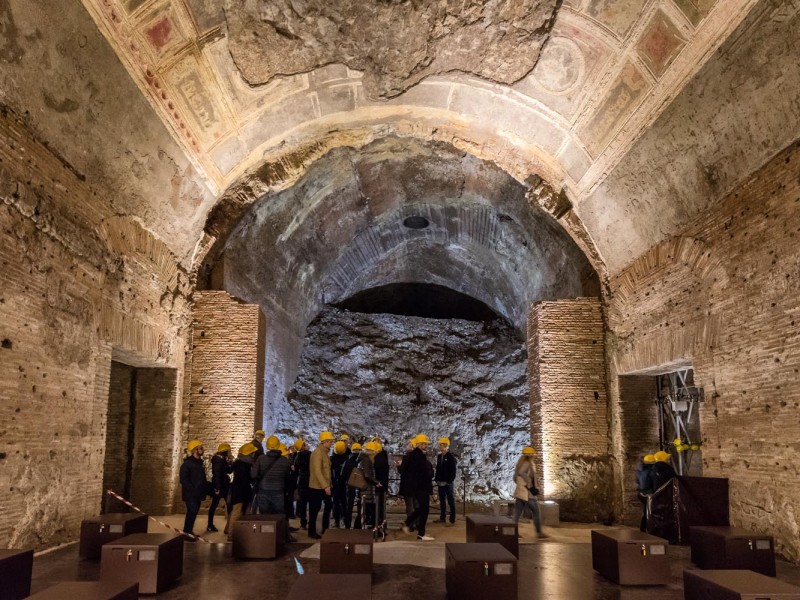

Raphael even took inspiration from the frescoes of the Domus Aurea for the making of the Vatican Loggia. Today the frescoes are faded, but were studied during the Renaissance artists such as Michelangelo and Raphael. Soon the word spread and the young Roman artists lowered themselves down inside the cave to admire the beautiful ancient frescoes. The cave was covered with painted figures. Towards the end of the XVth century, a young Roman accidentally fell into a cave. The burial helped the paintings to survive as sand worked as the volcanic ash of Pompeii, protecting them from moisture. In forty years, the Domus Aurea was totally buried under these new constructions. On the plot of the domus Aurea were built the Baths of Titus, the Temple of Venus in Rome and the Coliseum. It seems that the architects Severus and Celer, designers of the Domus, had created an innovative and ingenious mechanism to ensure the ceiling movement and rotation like the stars in to the sky.Īfter the Nerone’s death, the palace was stripped of its precious coverings. Today visitors can admire only few fragments of these old mosaics. The fine mosaics were mainly employed for covering floors, but then Nerone decided to decorate mosaic ceilings of some rooms anticipating one of the main issues of Christian art. On each floor there were pools and in the hallways fountains. The halls were finely coated in fine polychrome marble or richly frescoed. The “Domus Aurea” was essentially a villa for the holidays with approximately three hundred rooms and none of them used as sleeping rooms.

The statue had been adapted over the years with the heads of the various successors of Nerone, before Adriano decided to demolish it, to build the Flavian Amphitheatre, commonly called Colosseum.

The statue was placed at the main entrance of the building, overlooking the Palatine Hill. Nerone also commissioned a great big bronze statue of about thirty meters reproducing himself, dressed with the old dress of the Roman sun god, Apollo. At the center of the gardens which included forests and entire vines, there was a pond in part artificial, in which then arose the Colosseum. The villa extended for about 250 hectares, most of the area was occupied by gardens with pavilions destined to parties. It took this name because of the extensive gold claddings and the ceiling embellished with semi-precious stones and ivory plates requested by the emperator.

The name comes from the Latin, "house of gold". the palace burned completely and therefore it was necessary to build a new imperial residence, the Domus Aurea. In reality, Opper said, Nero was “trying very hard, and he was dealt an extremely bad hand.In the early years of his reign, Nerone had built the "Domus Transitional" designed to connect its possessions. The negative spin campaign began while Nero was still alive, when members of the Roman elite felt threatened by the emperor’s social reforms and his promotion of the lower classes, he said, and it continued long after his death. Those charges are “based on manipulations and lies that are 2,000 years old and very powerful,” Opper added. He is accused of having an incestuous relationship with his mother of killing her, as well as his first two wives and of being “generally evil: a glutton and profligate who burned down Rome just to build himself a grand palace,” Thorsten Opper, the exhibition’s curator, said. The charge sheet against Nero is long and familiar. Yet through sculptures and architectural fragments, coins and jewels, frescoes and writing tablets, the British Museum offers an alternative narrative of a young man who became emperor when he was not yet 17 and was driven to suicide by his adversaries at 30.


 0 kommentar(er)
0 kommentar(er)
